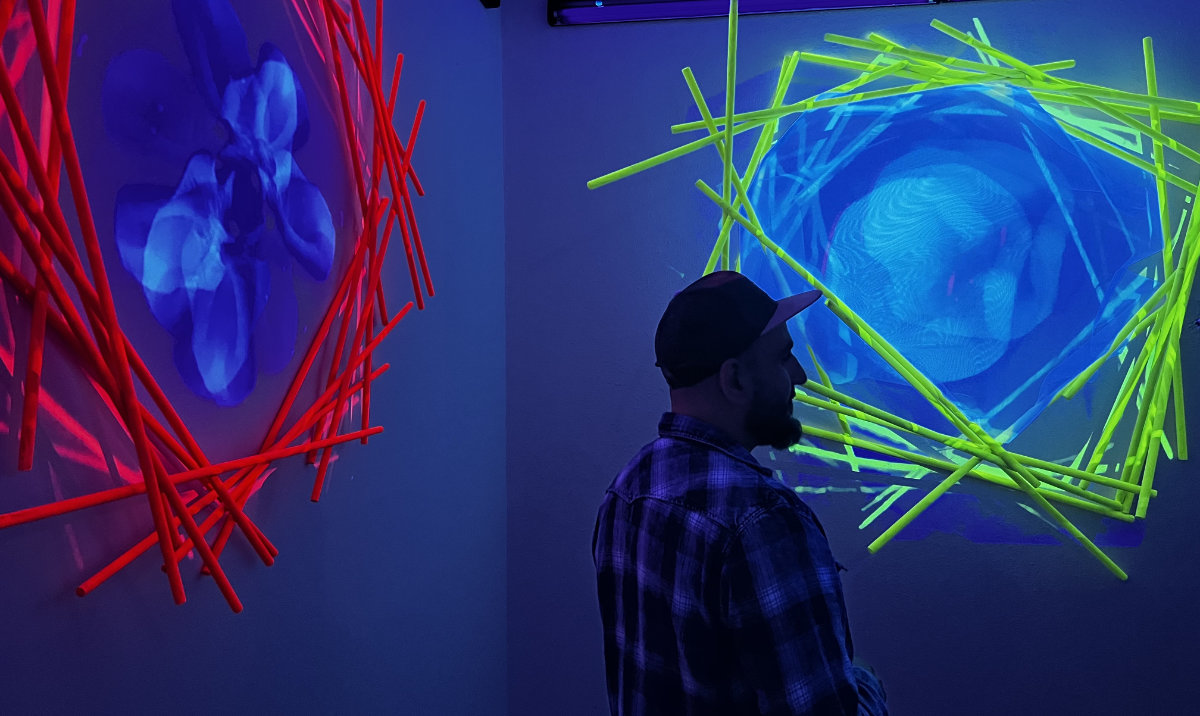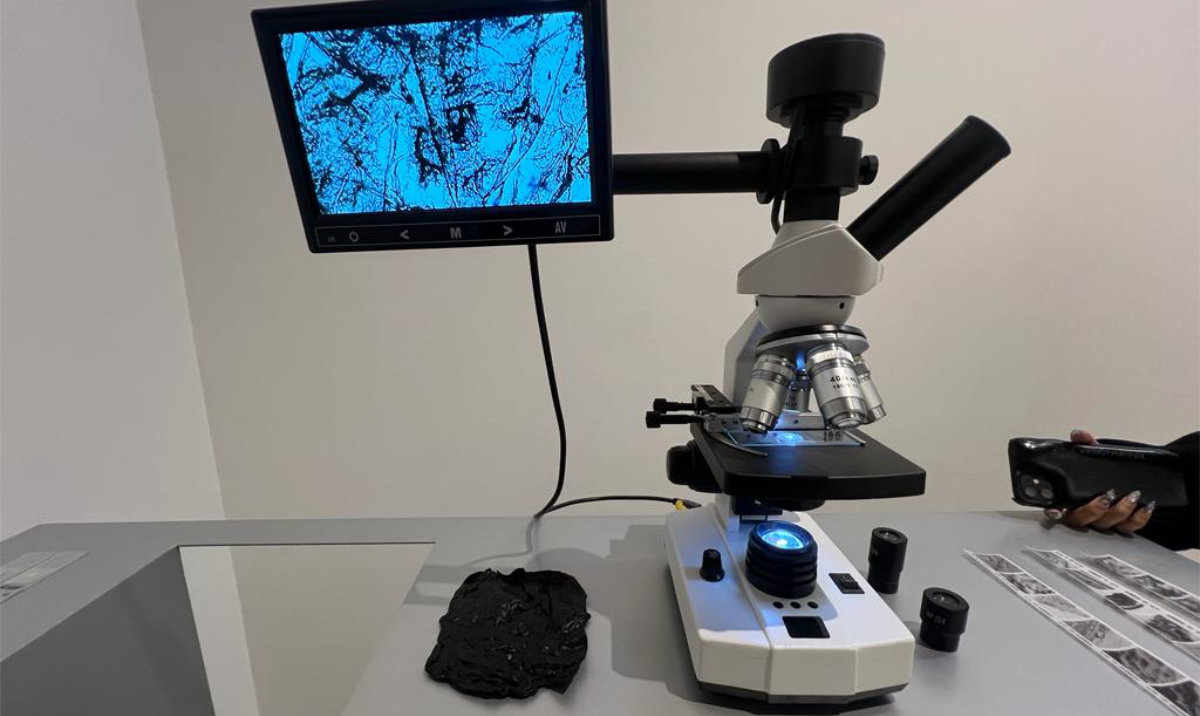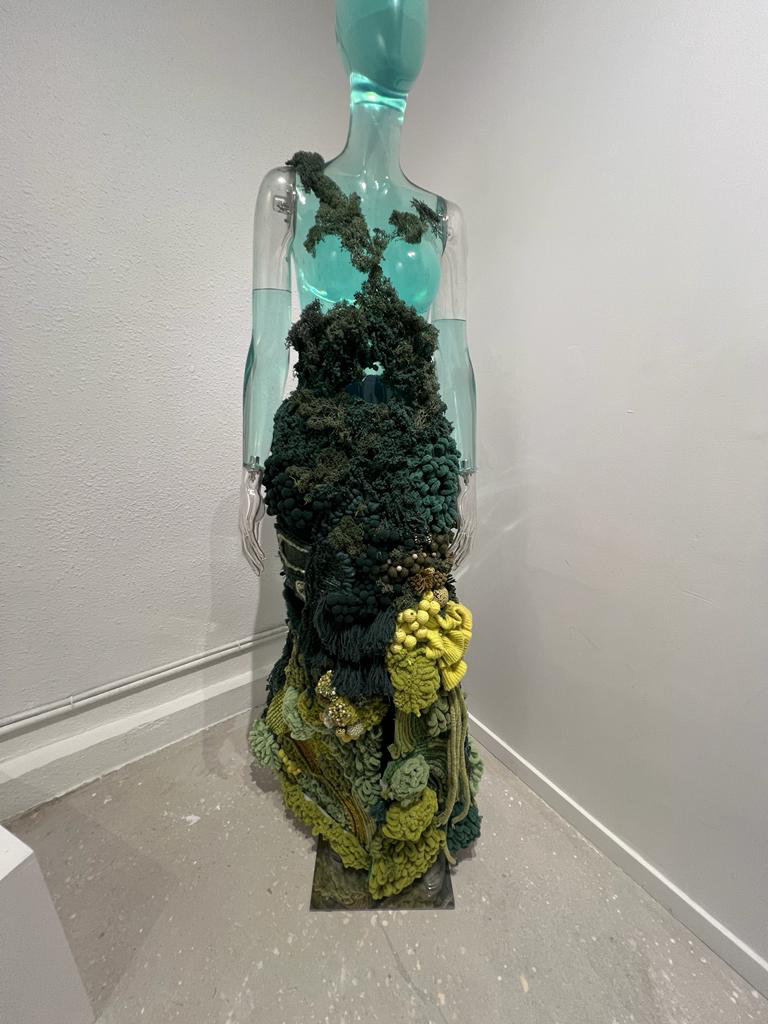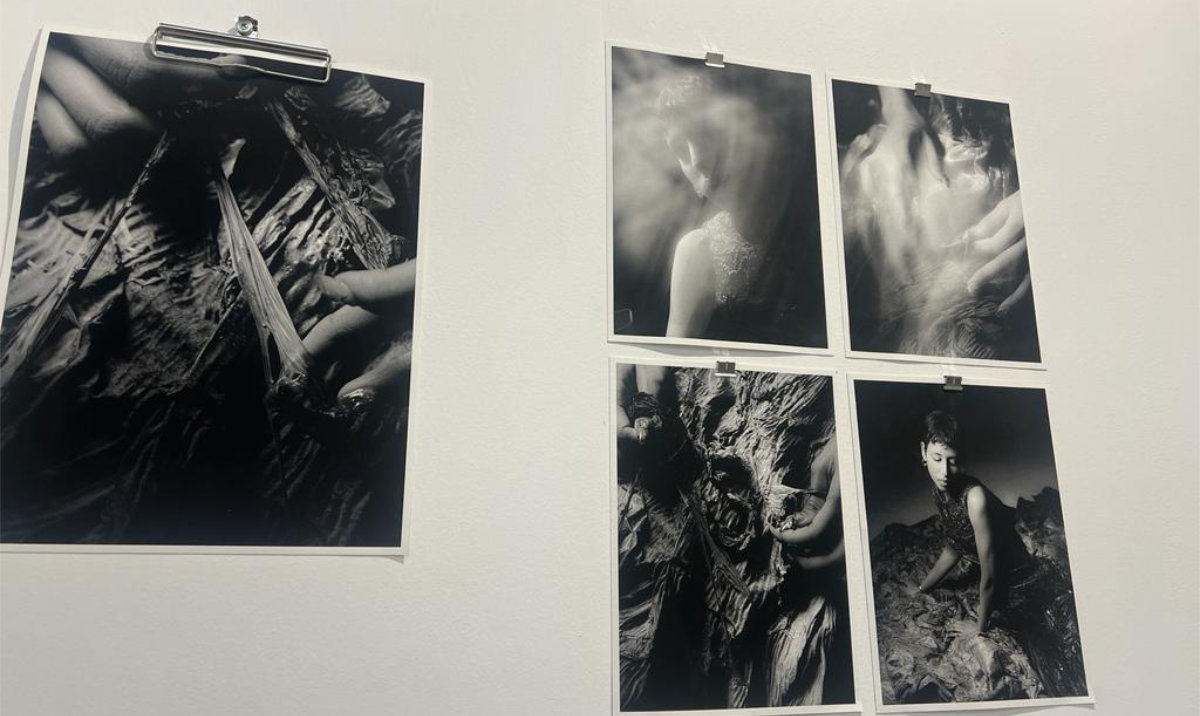RIYADH: Several Saudi and international artists displayed experimental artworks created from various natural materials including palm fiber, wood and rubber in Riyadh recently.
The 15 artists who participated in the second Intermix Residency titled “Art and Fashion Reimagined” showcased their work for two days in the Jax district in Diriyah.
The initiative is a collaboration between the Ministry of Culture’s Fashion Commission and Visual Arts Commission, which allowed the 15 artists to develop their projects over 10 weeks, focusing on the intersection between art and fashion.
“This residency was life changing. It’s what I was always looking for … the support that we received from the directors and the assistants was very helpful and the people we were surrounded by were very diverse,” artist Suhailah Benadim told Arab News.
Benadim, a Moroccan-American artist, has been a Riyadh resident for the past 17 years. During the residency, she highlighted the similarities between Najdi and Moroccan architecture in her research.

Moroccan artist Mohammed Amine El-Makouti placed fluorescent colors and ultraviolet lights at the base of his work. (AN photo)
“I did it from a narrative of a third-culture child’s perspective because there’s always a perpetual search for home — so I kind of created my own home elements,” she told Arab News.
Benadim used madder root, longwood shavings, and cutch extract to handprint and dye the base of the natural textiles. She designed versions of her metaphorical home in the center of each draping using the Indonesian Batik technique of wax-resist dyeing.
One of the pieces has a structure that emulates the exteriors of Najdi homes, with Moroccan elements in the center. Some of the interiors are inspired by houses in her father’s neighborhood, including metal artwork on doors and triangles that represent airways in old mud houses.
Saudi artist Maisa Shaldan takes a psychological and philosophical approach to her practice. At Intermix, she showcased an immersive cocoon-like installation, made with repurposed palm fibers that are usually discarded.
“I came into the residency with this question: Is this a material we can actually use as fashion or furniture designers?” she said.

Saudi graphic designer Reema Hamad’s lab-like, interactive artwork allows people to view and touch it. (AN photo)
She combined her understanding of the fibers’ nature with a notion of people needing shelter for containment and growth.
Shaldan said: “When someone has lost all their energy, they need to be reborn, or to hide within the womb of something to be born again. And that’s where the idea of the cocoon came from.
“Within the bustle of the city, we need self-withdrawal so we can strengthen and remerge.”
Moroccan artist Mohammed Amine El-Makouti placed fluorescent colors and ultraviolet lights at the base of his work. His project hopes to make sense of the body’s relationship with time and space.

Saudi fashion designer Bashayer Al-Hatmi created a piece showcasing the sea life of Farasan Island. (AN photo)
His two wall installations are video projections of a self-performance inspired by folk dances. He uses layers of mesh to bring the video performance alive with multiple dimensions. They are framed with fluorescent poles placed in abstract geometric patterns derived from Islamic architecture and his cultural heritage.
“The work is analyzing the self through the body, giving it another dimension, and exploring its rebirth … I’m always interested to mix between art, science and technology,” El-Makouti told Arab News.
Saudi graphic designer, Reema Hamad, sought to explore the role of skin as both a barrier to the physical world and a canvas, or living textile, for art.
“I made a fabric close to the human skin and human skin contains collagen fibers … and the materials that I use are from rubber trees and that texture that represents our inner self,” Hamad said.

Hamad’s artwork featured the artist wearing a piece of her own fiber that was meant to resemble human skin, and photographs were hidden beneath the microscope. (AN photo)
Her lab-like, interactive artwork allows people to view and touch it. She has miniature photographs that can be viewed under a microscope, and others of her wearing pieces of her own skin-like fiber.
“I adore visual art because, as a graphic designer, it’s all about expression. Like, I think it’s crucial to express oneself rather than merely convey a clear point.”
Saudi fashion designer, Bashayer Al-Hatmi, participated with a piece showcasing the sea life of Farasan Island in Jizan.
“I met Umm Ahmed, an 85-year-old Farasani woman who inherited her mother’s bead craft from her and taught it to her children and their offspring. In my artwork, I aimed to highlight regional crafts and document that culture,” Al-Hatmi said.
Her artwork features a mannequin with a dress fashioned from beaded textiles that represent the sea’s ecosystem, and is filled with seawater from Farasan Island.
The Intermix Residency also showcased the work of artists Ismail Odetola, Albandari Aljuaid, Oceane Sailly, Ella Strattmiller, Johanna Stella Rogalla, Somaya Alsayed, Tahra Al-Alshaikh, Nada Qari, Nehal Alaqeel and Andrea Alkalay.





























